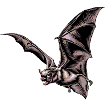Museum, University of Nebraska State

University of Nebraska State Museum: Mammalogy Papers
Document Type
Article
Date of this Version
7-2009
Abstract
We quantified protection given by a variety of gloves against bat bites by using steel indenters to simulate teeth and measuring forces needed to puncture the gloves. Level of protection given by gloves was compared to expected bite forces and tooth sharpness of bats. Cotton, plastic-coated synthetic fabric, and proprietary materials advertised as puncture- and cut-resistant were easy to penetrate compared to leather gloves. Split leather gives the highest level of protection, but with reduced dexterity. These are best for handling larger bats (>40 g) or if higher safety is preferred. Deerskin gives reasonable protection without much loss in dexterity for handling bats <40 g.
DOI: 10.2193/2008-295


Comments
Published in JOURNAL OF WILDLIFE MANAGEMENT 73(7):1251–1254; 2009. DOI: 10.2193/2008-295 Copyright 2009 PATRICIA W. FREEMAN and CLIFF A. LEMEN.